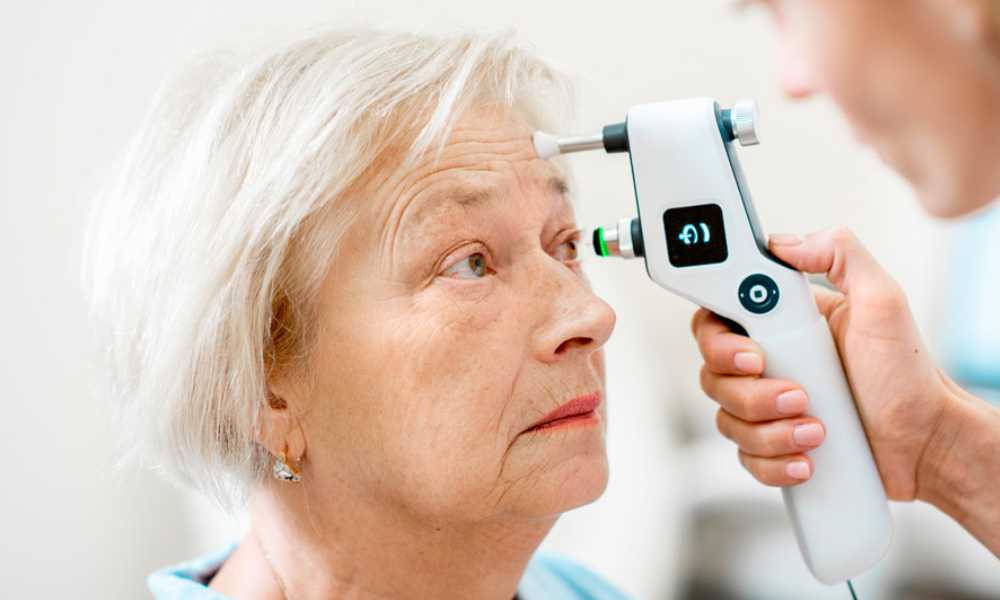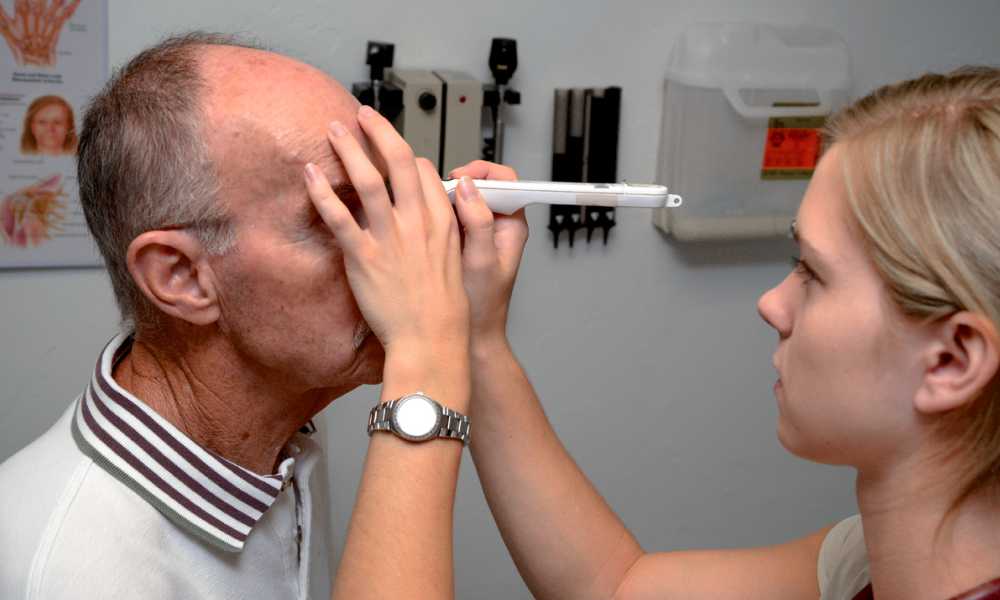Tonometry is a diagnostic test that measures the pressure inside your eye, which is called intraocular pressure (IOP). This measurement can help your doctor determine whether or not you may be at risk of glaucoma.
Glaucoma is a serious eye disease that can eventually lead to vision loss if untreated. In most cases of glaucoma, the fluid that normally bathes and nourishes the eye drains too slowly, causing pressure to build up.
Without treatment, the increased pressure can eventually harm your optic nerve and cause vision loss. According to the American Academy of Ophthalmology (AAO), glaucoma is one of the leading causes of blindness in adults over the age of 60.
The changes caused by glaucoma are often painless and can progress for years without you noticing. A tonometry test is critical for detecting the changes early.
If your test results come back abnormal, your eye doctor will recommend additional testing to confirm that you have the disease.
Tonometry is an eye test that can detect changes in eye pressure long before you may be aware of them.
The most common type of tonometry test is called the “Goldmann applanation tonometry test.”
For decades, it has been considered the international gold standard for measuring eye pressure. It involves the use of a flat-tipped probe that is gently pressed against the surface of your eye.
There are several other methods for testing for eye pressure, too.
These include an alternative type called non-contact tonometry as well as use of the Tono-Pen and iCare tonometer. These tests are usually considered less accurate than Goldmann applanation tonometry.
In non-contact tonometry , air pressure is applied to your eye using an instrument that slightly flattens the cornea.
The instrument blows a brief puff of air at your cornea, measuring the pressure in your eye. If it shows abnormal results, your doctor will usually perform other tests to confirm your diagnosis.
The Tono-Pen is a handheld device that’s shaped like a large marker. Your doctor can touch this device to your eye to measure the pressure.
The iCare tonometer is also a handheld device that gently taps the front of the eye to obtain a pressure reading.
Your eye doctor may order the Goldman applanation tonometry test if they suspect that you may be at risk of glaucoma.
They may also order the applanation tonometry test to confirm or rule out glaucoma if another eye test has indicated a potential problem.
According to the AAO, you may be at heightened risk of glaucoma if you:
Your doctor might also test your eye pressure if you’re experiencing symptoms such as:
All of these symptoms may be signs of glaucoma.
Before the Goldmann tonometry test, your eye doctor will put numbing eye drops in your eye so that you don’t feel anything touching it.
Once your eye is numb, your doctor may touch a small strip of paper that contains orange dye to the surface of your eye to stain it. This helps increase the accuracy of the test.
Your doctor will then put a machine called a “slit-lamp” in front of you. They’ll ask you to rest your chin and forehead on the supports provided, then move the lamp toward your eye until the tip of the tonometer probe touches your cornea.
By flattening your cornea just a bit, the tonometer can detect the pressure in your eye. Your eye doctor will adjust the tension until they get a proper reading. Because your eye is numb, you’ll feel no pain during this procedure.
Tonometry is extremely safe. However, there’s a very small risk that your cornea could be scratched when the tonometer touches your eye. However, even if this happens, your eye will normally heal itself within a few days.
A normal test result means that the pressure in your eye is within the normal range and you probably don’t have glaucoma or other pressure-related eye problems.
According to the Glaucoma Research Foundation, the normal eye pressure range is 12 to 22 mm Hg. The measurement “mm Hg” means “millimeters of mercury,” which are the units used to record eye pressure.
If your test comes back with a pressure reading that’s higher than 20 mm Hg, you may have glaucoma or pre-glaucoma. High eye pressure is just one symptom of glaucoma and your doctor will do additional testing to confirm the diagnosis.
Your doctor will discuss treatment options with you if they diagnose you with glaucoma or pre-glaucoma.
 What is a Tonometry test?
What is a Tonometry test?
 How To Properly Use a Tono-Pen
How To Properly Use a Tono-Pen